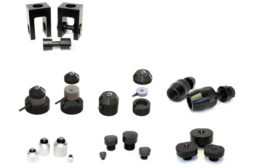Home » calibration
Articles Tagged with ''calibration''
Web Exclusive
Recommended Compression and Tension Adapters for Force Calibration
July 3, 2019
Other Dimensions
When is a gage worn out?
Ideally, the record would indicate how much wear is acceptable.
April 1, 2019
Do I Have to Calibrate That?
Here's the general rule of thumb in these situations.
March 15, 2019
Reports, Certs and Other Documents
The simplest way to get what you want is to spell it out.
February 8, 2019
Standards: Who Writes that Stuff Anyway?
Once a new standard is written that is not the end of it all.
January 15, 2019
Get our new eMagazine delivered to your inbox every month.
Stay in the know with Quality’s comprehensive coverage of the manufacturing and metrology industries.
SIGN UP TODAY!Copyright ©2024. All Rights Reserved BNP Media.
Design, CMS, Hosting & Web Development :: ePublishing




